Coral reef food webs are a fascinating dance of life and death. Every organism plays a crucial role in maintaining the reef’s delicate balance, from tiny algae to mighty sharks.
⫸ Introduction to Coral Reef Food Webs
Coral reefs are the bustling metropolises of the ocean, teeming with a dazzling array of life. But beneath the vibrant colors and mesmerizing shapes lies a complex network of interactions – the coral reef food web. To understand this underwater world, let’s dive into the basics:
What are coral reefs?
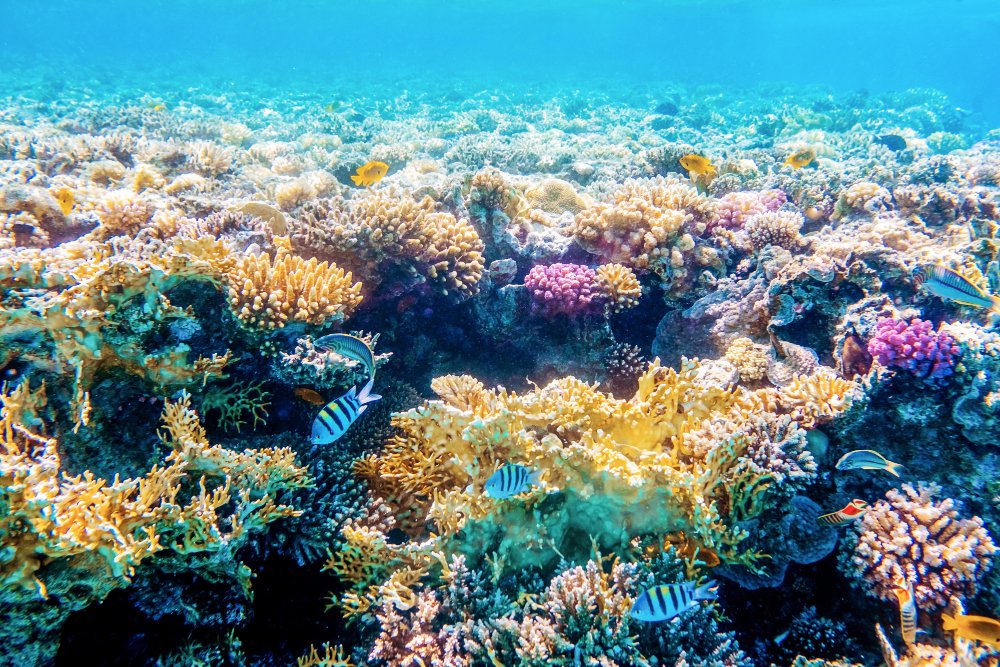
- Coral reefs are underwater ecosystems built primarily by tiny animals called coral polyps. These polyps secrete calcium carbonate, forming the complex structures we recognize as coral.
- Reefs form in shallow, tropical waters where sunlight and nutrients are plentiful.
- They provide habitat for thousands of species, from microscopic algae to massive sharks.
Why are coral reefs important?
- Biodiversity hotspots: Coral reefs are biodiversity hotspots, supporting an incredible variety of marine life.
- Coastal protection: They act as natural buffers against storms and waves, protecting shorelines.
- Food and income: Reefs provide food for millions of people and support vital fishing and tourism industries.
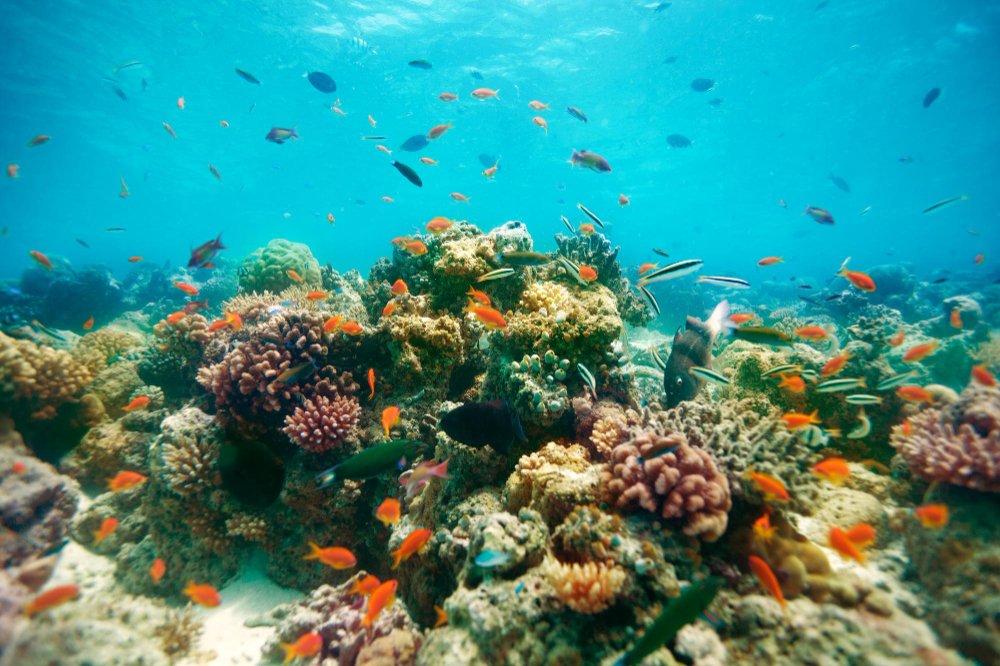
The intricate relationships within a coral reef
- Coral reefs aren’t just a collection of organisms but are interconnected ecosystems.
- Sunlight, algae, fish, coral polyps, and predators depend on each other in delicate relationships.
- These relationships form the basis of the coral reef food web.
Why understanding coral reef food webs matters
- Predicting ecosystem changes: Understanding the food web helps scientists predict how changes (like overfishing or pollution) might ripple through the reef ecosystem.
- Conservation efforts: Knowledge of the food web allows targeted conservation efforts to protect keystone species essential to the ecosystem’s stability.
- Overall ocean health: Coral reef food webs play a vital role in the health and productivity of our entire ocean
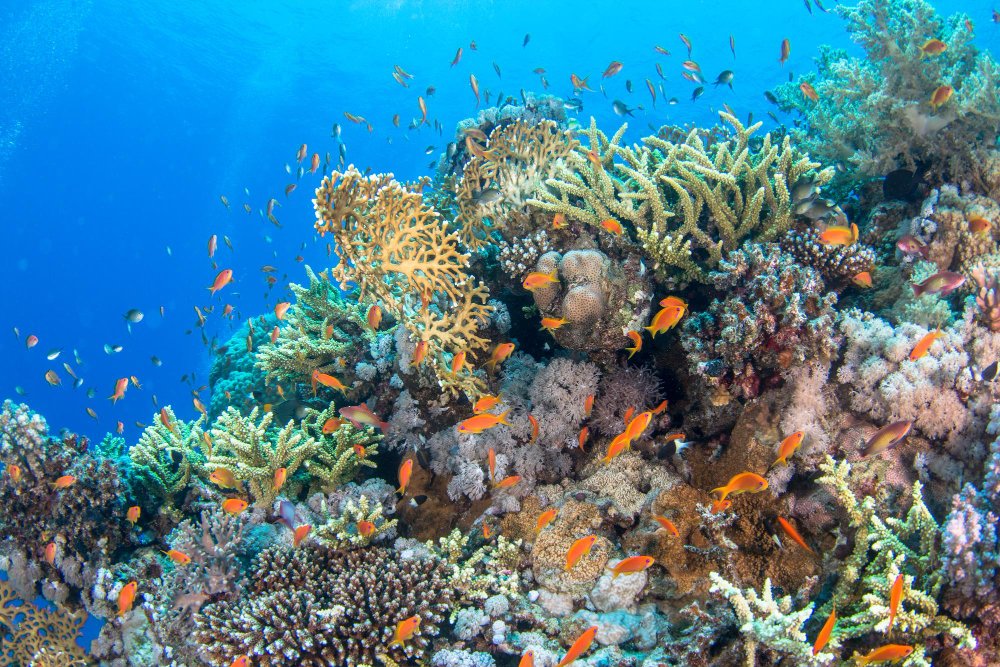
⫸ Primary Producers: The Foundation of the Food Web
With primary producers, coral reefs are the vibrant, life-filled wonders they are. These organisms form the base of the coral reef food web, transforming sunlight into the energy that fuels the entire ecosystem.
Photosynthesis and sunlight's role
- Primary producers are masters of photosynthesis, using sunlight, carbon dioxide, and water to create food (sugars) and release oxygen.
- The abundance of sunlight in shallow, tropical waters where coral reefs thrive is key to their productivity.
Types of primary producers in coral reefs
- Zooxanthellae (algae): These microscopic algae live inside coral polyps in a symbiotic relationship, providing corals with food while receiving shelter and nutrients.
- Phytoplankton: Tiny, free-floating plants form the base of many marine food chains, including those in coral reefs.
- Seagrass: Flowering plants that form underwater meadows, seagrasses provide food for grazers and a habitat for various reef creatures.
⫸ Primary Consumers: The Herbivores
Primary consumers are the backbone of the coral reef food web, directly feeding on the energy harnessed by the producers. Let’s dive into some of the key players:
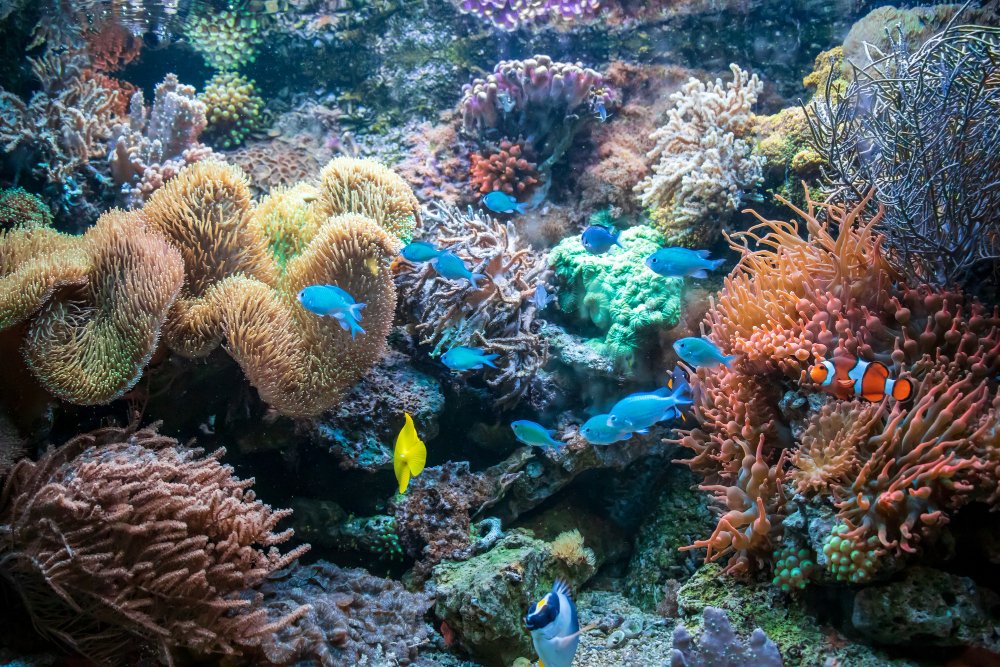
Coral Polyps: Tiny but Vital
- Despite their miniature size, coral polyps are the architects of the reef. They capture plankton with their tentacles and house the all-important zooxanthellae algae within their tissues.
- These algae provide corals energy, making them crucial to the reef’s growth and survival.
Parrotfish: Reef-building Grazers
- Parrotfish, with their vibrant colors and beak-like mouths, are essential for keeping algae in check.
- They graze on algae that could smother corals, playing a vital part in maintaining the reef’s structure.
- Fun fact: Parrotfish ‘poop’ contributes to the coral reef’s beautiful white sand!
Sea Urchins: Keeping Algae in Check
- These spiny creatures are like lawnmowers on the reef, scraping away excess algae growth that competes with corals.
- They help maintain a healthy balance, ensuring corals have space and sunlight to thrive.
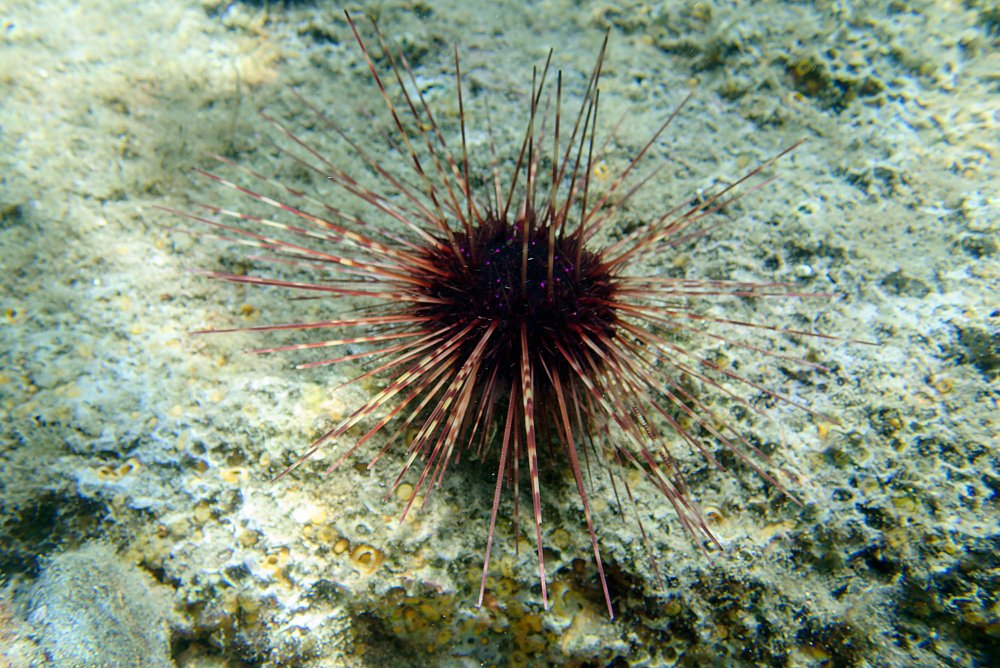
Zooplankton: Microscopic but Mighty
- Despite their tiny size, zooplankton are a massive food source in the coral reef food web.
- These drifting organisms include everything from tiny fish larvae to crustaceans.
- Many corals and filter feeders rely on zooplankton as a vital part of their diet.
⫸ Secondary and Tertiary Consumers: The Predators
Predators are the power players in the dynamic world of coral reef food webs. From small, agile fish to the mighty apex predators, they shape the ecosystem and keep populations in balance.
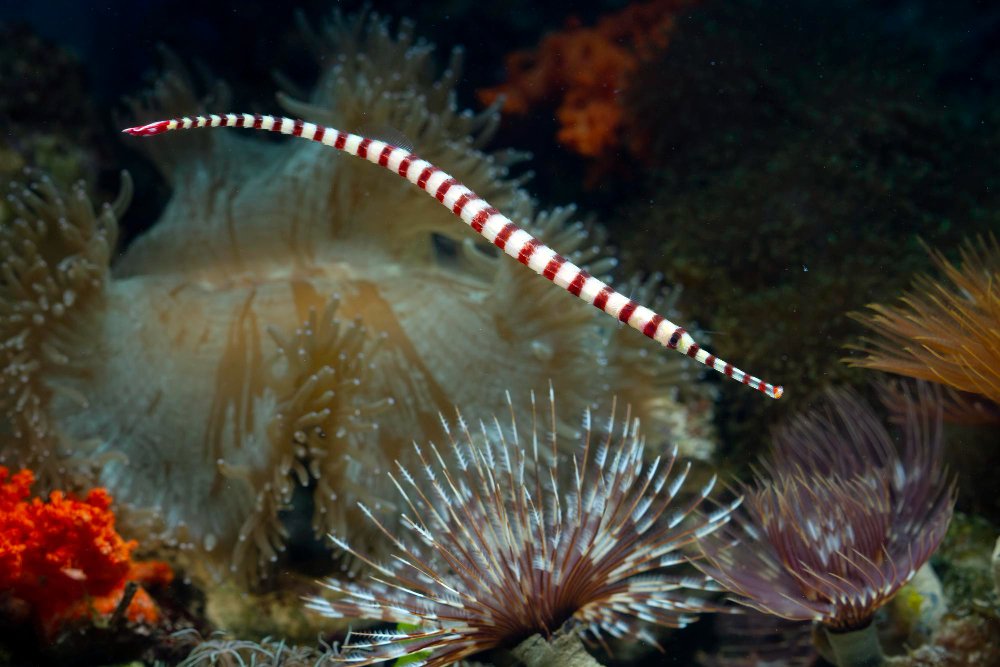
Small fish: Linking the food web
- Schools of vibrant damselfish, wrasse, and other small fish form a crucial link in the reef food web.
- They feed on zooplankton and smaller organisms, transferring energy from primary consumers up the chain.
- Small fish are also a vital food source for larger predators, fueling their growth and reproduction.
Snappers, groupers, and other mid-level predators
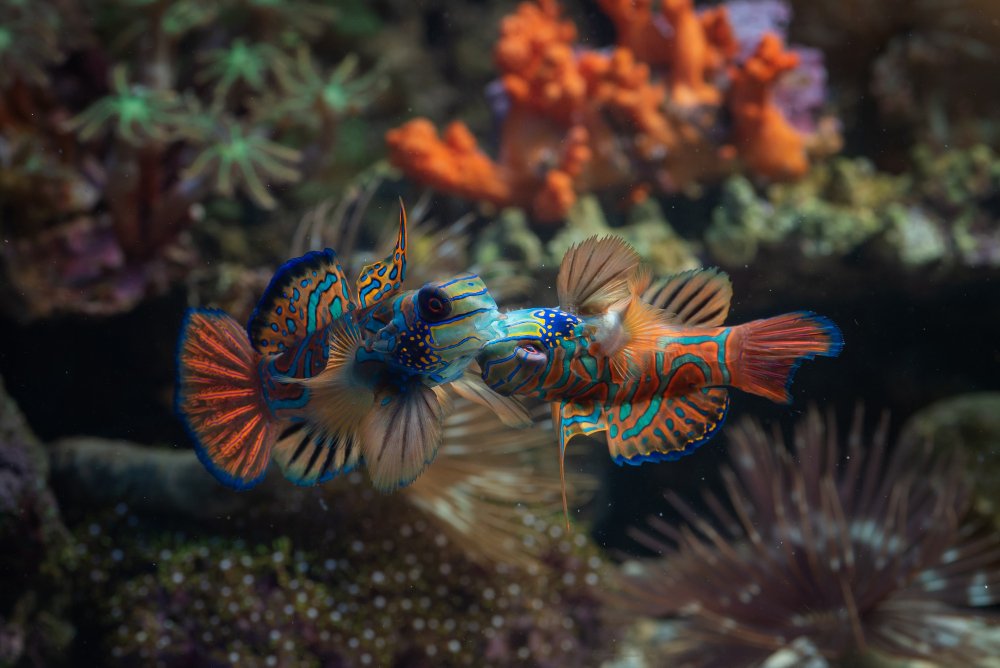
- These fish are reef hunters, employing diverse strategies to capture prey.
- Snappers use their powerful jaws to crush crabs and shellfish.
- Groupers often ambush their prey, hiding in crevices and darting out with lightning speed.
Hunting strategies in the reef
- Reefs are complex environments, and predators have evolved diverse hunting strategies:
- Camouflage: Some fish blend seamlessly with their surroundings, waiting to ambush their prey.
- Cooperation: Species like moray eels and groupers sometimes cooperate to trap and flush out prey.
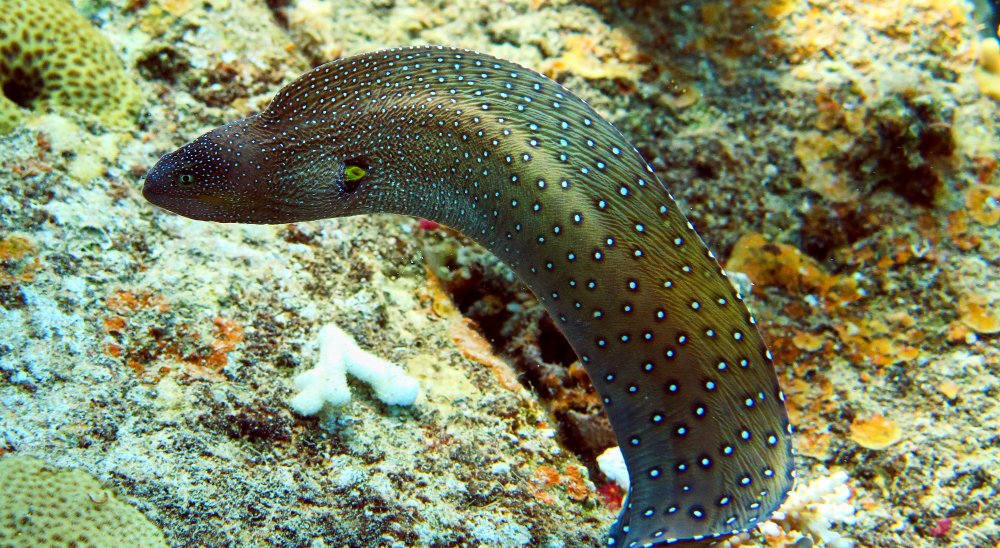
Apex predators: Sharks and their role
- Sharks are apex predators at the top of the coral reef food web.
- They play a vital role in regulating populations of mid-level predators and herbivores.
- Sharks help maintain a healthy and diverse ecosystem by removing sick or weak individuals.
Maintaining ecosystem balance
- Apex predators prevent species from becoming too dominant, maintaining the intricate balance of the coral reef food web.
- Their presence ensures that energy and nutrients flow efficiently through the entire system.
⫸ Decomposers and Detritivores: Cleaning Up the Reef
The coral reef food web wouldn’t be complete without the unsung heroes – the decomposers and detritivores. These organisms are critical in breaking down dead matter and recycling nutrients, ensuring the reef stays healthy and productive. Let’s meet some of these cleanup crew members:
Bacteria: Breaking down waste
- Bacteria are the masters of decomposition. They break down dead organisms, fish waste, and other organic debris into simpler nutrients that can be reabsorbed into the food web.
Sea cucumbers: The reef's recycling system
- Sea cucumbers might not look like much, but they’re vital for reef health. They ingest sand and organic matter, filtering out nutrients and excreting cleaner sand, keeping the reef floor tidy.
Scavengers: Utilizing every food source
- Scavengers, like crabs, snails, and certain fish, help prevent waste buildup. They feast on dead organisms, ensuring that energy and nutrients aren’t lost from the coral reef food web.
⫸ Threats to the Coral Reef Food Web
The intricate balance of coral reef food webs, essential for the survival of countless marine species, faces many devastating threats. From the far-reaching effects of climate change to localized pollution, human activities are disrupting this delicate ecosystem at an alarming rate.
Climate change and coral bleaching
- Rising ocean temperatures stress corals, causing them to expel the symbiotic algae (zooxanthellae) that provide them with nutrients and their vibrant colors.
- Bleached corals become weak and vulnerable, leading to widespread death and the collapse of the reef’s foundation.
- This disrupts the entire food web, as many organisms rely on live coral for food or shelter.
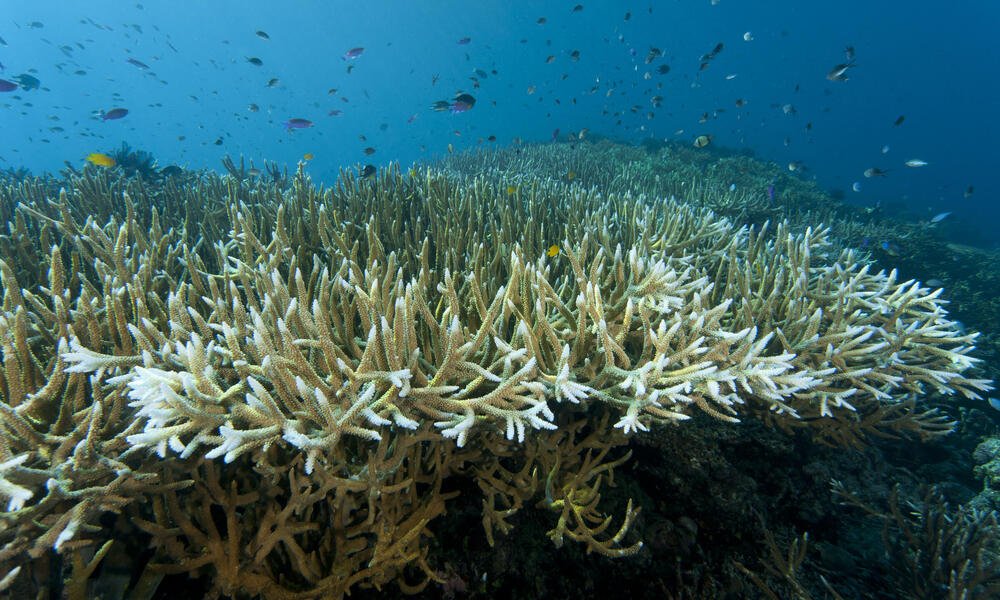
Overfishing and predator removal
- Removing too many fish, particularly top predators, disrupts the natural balance of populations within the reef.
- This can lead to explosions in herbivore populations (like sea urchins), which can overgraze algae and further damage corals.
- Loss of predators allows mid-level prey to proliferate, putting additional pressure on the organisms they consume.
Pollution and its impacts on the food chain
- Runoff from agricultural land carries fertilizers and chemicals that encourage harmful algal blooms, smothering corals and disrupting oxygen levels.
- Plastic pollution physically damages reefs and is ingested by marine life, causing harm throughout the food web.
- Toxins can accumulate in organisms, a process called biomagnification, where top predators end up with dangerous contaminants.
⫸ Conservation Efforts: Protecting the Delicate Balance
The dazzling complexity of coral reef food webs is matched only by its fragility. Human actions threaten to disrupt this balance, but dedicated conservation efforts offer hope for the future. Here are key strategies to protect these vital ecosystems:
Sustainable fishing practices
- Overfishing removes crucial links in the food web, destabilizing populations of predators and prey alike.
- Implementing size and catch limits helps fish populations rebound.
- Banning destructive fishing methods like bottom trawling protects the reef’s physical structure.
- Supporting local fishers who use traditional, sustainable methods.
Reducing pollution and combating climate change
- Excess nutrients from runoff fuel algae blooms, smothering corals and disrupting food chains.
- Plastics and chemical pollution directly harm reef organisms, from the smallest plankton to large predators.
- The biggest threat, climate change, causes coral bleaching events and disrupts the entire reef ecosystem. Global action is needed to reduce emissions.
Marine protected areas and reef restoration
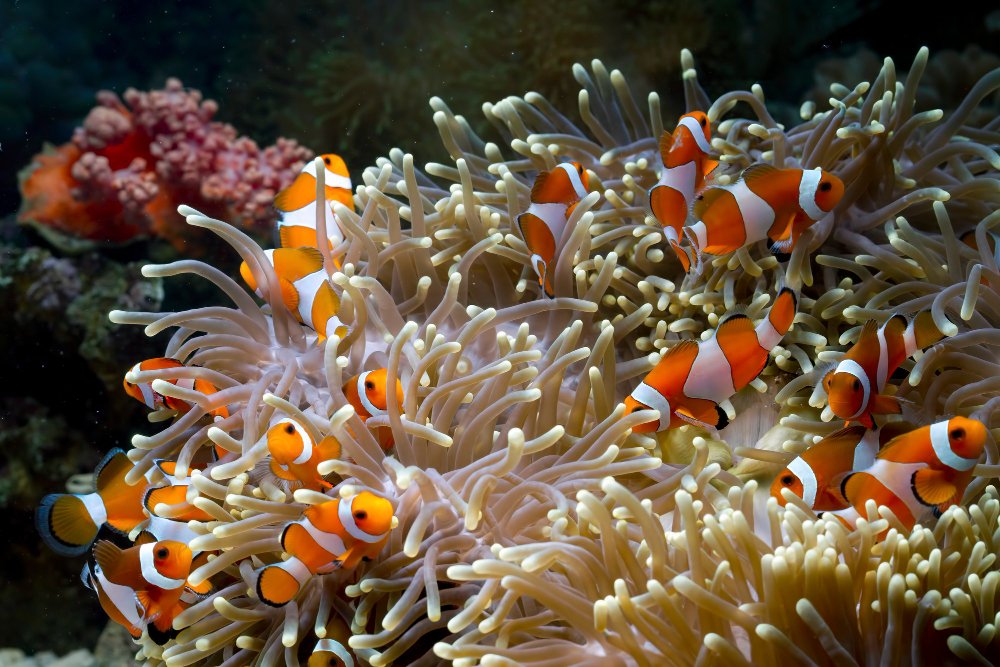
- Marine protected areas (MPAs) are like underwater national parks, giving reefs a chance to recover from damage.
- Well-managed MPAs see increased fish populations and overall reef health.
- Active reef restoration projects involve transplanting corals and re-establishing crucial species to help damaged reefs bounce back.
⫸ Conclusion
Coral reef food webs teach us an invaluable lesson about the delicate balance of nature. Let’s delve into a few crucial takeaways:
The interconnectedness of life in coral reefs
- Every organism, from microscopic algae to apex predators, is linked in an intricate web. A change in one population impacts the entire system.
The fragility of this vital ecosystem
- Coral reefs are incredibly sensitive to environmental changes. Overfishing, pollution, and climate change can disrupt the food web, leading to cascading collapses.
A call to action for protecting coral reefs
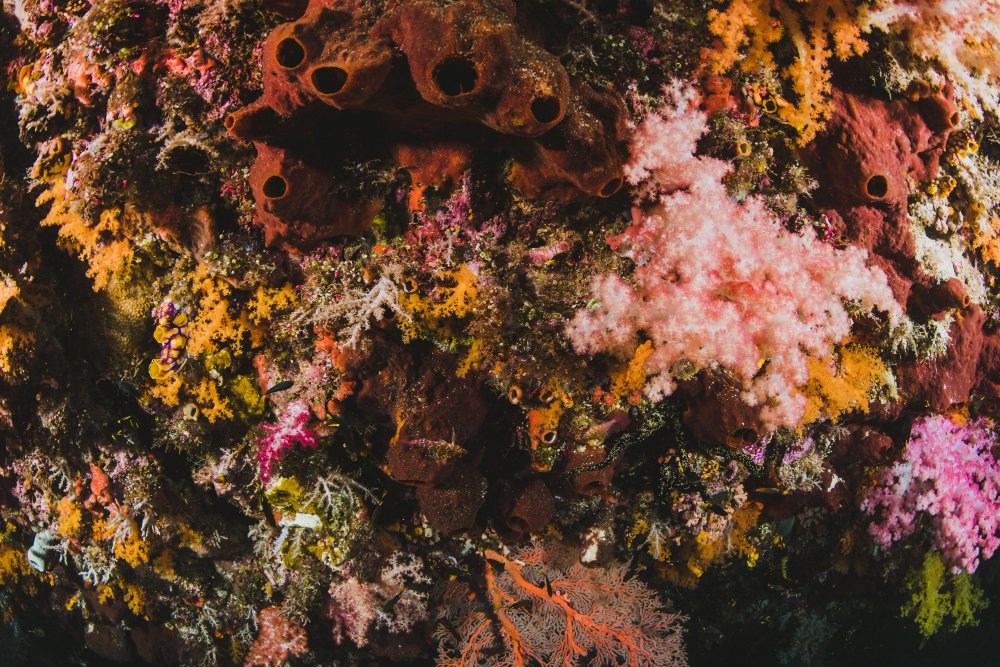
- The fate of coral reefs is in our hands. We can reduce our carbon footprint, support sustainable fishing practices, and advocate for marine conservation. Small actions make a big difference in the health of our oceans.
Coral reef food webs powerfully remind us that we are part of nature, not separate from it. Understanding and protecting these underwater marvels ensures a healthier future for ourselves and future generations.
